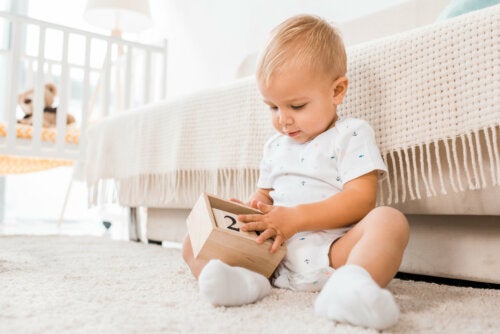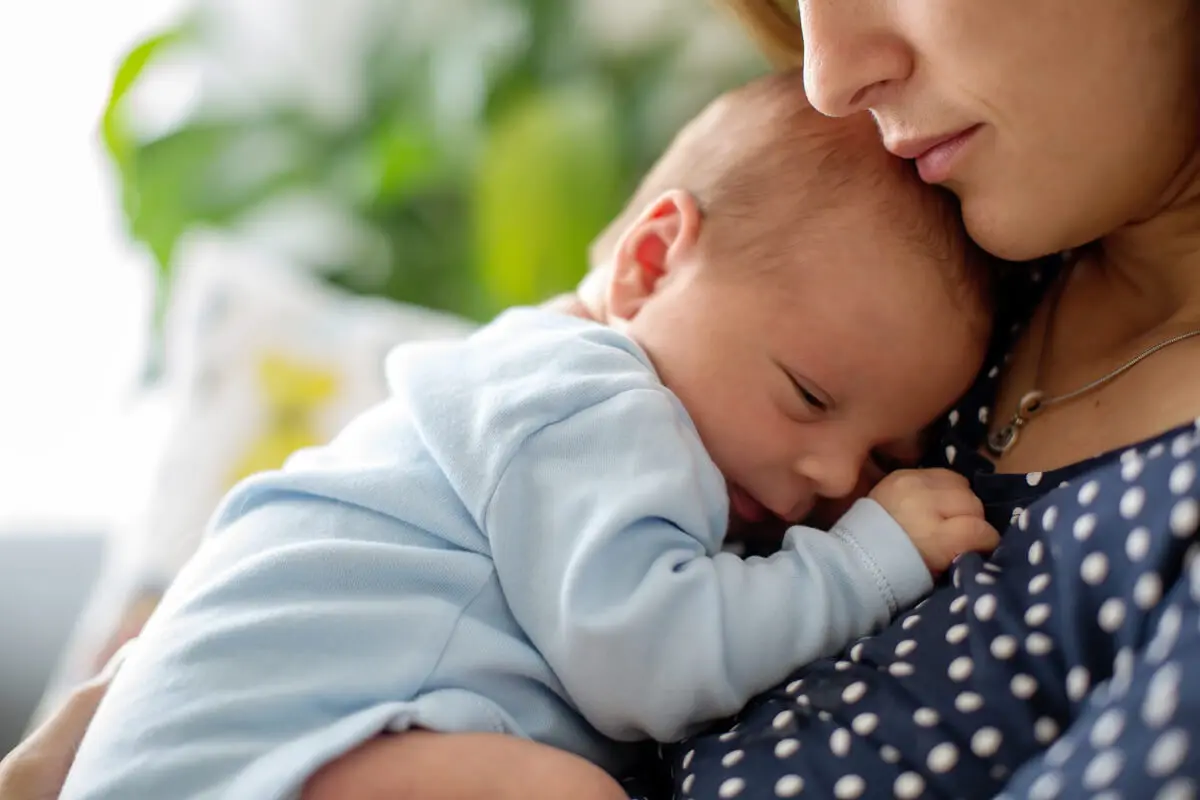What Is Object Permanence and When Does It Appear in Babies?


Written and verified by the psychologist Elena Sanz
Babies undergo dizzying physical and psychological development during their first years of life. They acquire a multitude of abilities that enable them to better understand and function in their environment. Among the most important of these is object permanence, a psychological ability that helps the child to understand that there is a world beyond him or herself.
For a newborn baby, the only things that exist are what they can see, touch, smell or feel. What escapes their own perception simply doesn’t exist for them. This is because they don’t yet have the capacity to mentally represent objects or people. So, if their mother leaves their field of vision, they probably won’t cry or show signs of distress, and if a toy is hidden from them, they will not try to look for it.
This reality begins to change after four months of age, when object permanence gradually and progressively develops. Then, the baby will begin to understand that the elements have an existence of their own and continue to be there despite not being able to perceive them with the senses. This is a major milestone that marks a before and after in the infant’s cognition.
Object permanence and cognitive development according to Piaget

The Swiss psychologist Jean Piaget made great contributions to the understanding of developmental psychology, among which his classification of the four stages of cognitive development stands out. According to this author, children go through different periods in which their way of thinking, interpreting, and relating to the environment varies significantly.
The first of these stages, known as the sensorimotor stage, spans from birth to two years of age and has object permanence as the main achievement to reach.
Piaget observed the development of this ability by examining how babies react when they are presented with a toy and then it’s hidden with a blanket. Progressively, the child will go from showing no intention to search to being able to find the object when it’s partially visible and even to find it in unsuspected places.
Sub-stages of the sensorimotor stage
All these transitions occur in the sub-stages described by the same author:
- Reflex activity: during the first month of life, the infant acts mainly through innate reflexes. They learn to move their body and can follow an object with their sight, but what escapes their field of perception ceases to exist for them.
- Primary circular reactions: between the first and fourth months, the infant already acts more intentionally and pays more attention to objects. However, they don’t yet understand that they continue to exist beyond their senses.
- Secondary circular reactions: between four and eight months, the first notions of object permanence begin to emerge. The child will already try to reach toys that are partially hidden, as he/she will understand that the rest of the toy is also there.
- Coordination of secondary circular relationships: from eight to twelve months, object permanence itself is established. At this time, the baby will already look for and be able to retrieve totally hidden objects, provided that they have seen how they were hidden.
- Tertiary circular reactions: the infant is now between 12 and 18 months old. They are now able to look for an object in places where it’s usually found. They know that the object exists even if they don’t see it and they look in the most familiar places. However, if it’s placed in a strange place, they won’t think to look there.
- Symbolic problem solving: From 18 to 24 months, the child understands that the object can be anywhere, even if they haven’t seen how it has been hidden. In this way, they manage to have a mental representation of the object and can imagine that it is in different places.
Object permanence and its relation to separation anxiety
Object permanence is essential for the infant to function in their own environment, but it also has a great influence on a social level. The child used to think that people ceased to exist when they didn’t perceive them; now they know that they still exist and understand that they are gone. What they don’t know is when they will return or if they have left them forever.
For the same reason, with the development of object permanence, the well-known separation anxiety also arises. The infant who used to remain calm and serene when left in the crib or when their parents left them in the care of others, may now react with great anguish, crying, and despair to these same situations.
Before, they didn’t clearly perceive the separation between themselves and the rest of the world. Now, they know that their attachment figures are individuals and they are worried that they will move away from them.
How to stimulate the learning of object permanence

Object permanence is an evolutionary milestone that all infants reach sooner or later. It’s worth mentioning that the ages proposed by Piaget are indicative and that each child can follow his or her own rhythm. In fact, his postulates have received several criticisms, since authors such as Bower affirm that this ability is present at much earlier ages.
In any case, this learning can be stimulated through games and simple activities with the baby:
- Peek-a-boo: this popular game consists of covering the face with the hands and asking the child “Where is mommy?”. Subsequently, the face is uncovered while exclaiming “Here she is!”. Younger babies, who have not yet developed object permanence, will react with fascination.
- Hiding: it is also good to play at hiding dolls and observe if the child looks for them. First, hiding them partially and then completely. Later, you can try hiding them while the child doesn’t see them. You can develop this same dynamic by being the attachment figure who hides.
- Montessori object permanence boxes: this toy can be used from the age of six months. It allows the child to insert an object in a slot, watch it disappear for a few moments and can retrieve it either automatically (boxes with tray) or by opening the door or drawer of the box where it has been inserted.
It’s important that you don’t worry if your child is a little behind the age guidelines for developing this skill. Remember that this is not a matter of stimulation and that at some point he or she will acquire this ability. For the time being, enjoy watching them discover how the world works.
All cited sources were thoroughly reviewed by our team to ensure their quality, reliability, currency, and validity. The bibliography of this article was considered reliable and of academic or scientific accuracy.
- Bower, T. G. R., & Wishart, J. G. (1972). The effects of motor skill on object permanence. Cognition, 1, 165–172.
- Feldman, R. (2007). Modelo del desarrollo cognoscitivo de Piaget. En Desarrollo Psicológico. (pp. 158-167). México: Pearson.
- Piaget, J. (1964). Part I: Cognitive development in children: Piaget development and learning. Journal of research in science teaching, 2(3), 176-186.
This text is provided for informational purposes only and does not replace consultation with a professional. If in doubt, consult your specialist.








